Driving a car, or getting run over by one, unfortunately still ranks as one of this highest causes of death. Despite the fact that cars are safer than ever, they are still driven by human beings who often have trouble retaining the basic techniques and rules of operating a vehicle.
But if you’re reading this, hopefully it means that you are intent on doing what it takes to be just a little more careful. So for you, here are some advanced tips that everyone should know …
#6. Don’t Have Your Car Visible Anywhere in Your Mirrors
This is one of those things that takes next to zero effort to do right, but that almost everyone does wrong.
You hopefully already know that the “blind spot” is the name for the area on either side of a car that is invisible to wing mirrors. It’s such a frequent cause of accidents that higher-end car models have adopted fancy radar or camera systems capable of detecting other vehicles in your blind spots and delivering the information to you in furiously urgent beep-screams as you swerve in terror and/or crash anyway.
However, the technology isn’t the problem — the necessary equipment to eliminate blind spots was around back when Henry Ford was still producing cars. All you need are your car’s wing mirrors — which most people have adjusted incorrectly.
You see, blind spots can be put into full view of your side mirrors, provided that these mirrors are adjusted to contain no part of your own car. Just angle them away from you until the point where your car is no longer visible in either one, and leave them there. That way, there’s no overlap between them and the rear view mirror, and any car that’s passing you on either side will remain in at least one of your mirrors until it enters your field of vision.
Admittedly, this seems less like a “tip” and more like “the most obvious piece of instruction of all time,” but nobody does it. Manufacturers have to let you adjust the mirrors (due to things like differences in driver height), and most people simply don’t know how to do it. That’s why those same engineers are spending millions on technology meant to eliminate blind spots — they have simply failed to teach people not to point their mirrors at the sides of the vehicle they’re attached to.
#5. Pay More Attention to Traffic Than Road Signs
If you saw someone blow past a yield sign into traffic and vanish in an explosion of steel and glass, you’d be tempted to blame the crash on the driver who ignored the road sign.
But what if the yield sign wasn’t there, like those intersections where there’s nothing but an esoteric flashing yellow light and everyone stops and stares at each other? There would probably still be the odd person who flies through, but average drivers would become extremely cautious as a result of having no clear instruction of what to do. They would instead just intuit their next move based on the traffic around them, which is kind of the point of stoplights and road signs to begin with — to force you to stop and look.
There are experts who believe that the overabundance of signs and signals just make you complacent, because you’re fixated on blindly following instructions printed on reflective metal. And we’ve all seen it happen — drivers with a green light will plow through an intersection and T-bone another car that was clearly in their path, simply because the pretty colored light told them they had the right of way. And think about how people will have a fit if traffic and/or weather conditions have them driving slower than the posted speed limit, routinely causing accidents by trying to weave their way back up to maximum warp, even though the speed limit is literally just a number on a sign that takes absolutely nothing into consideration beyond what a few civil engineers came up with on a calculator 30 years ago.
The Dutch city of Drachten decided to test out the theory by replacing 20 four-way intersections with 20 roundabouts free of any road signage, and the results were surprisingly nothing like The Cannonball Run. One intersection that typically killed two to four people every year saw no injuries for the next six years, and another intersection went from 36 accidents in the previous four years to just two in two years. All this just from putting more responsibility into the hands of drivers and forcing them to interact with each other in the absence of indifferent commands from stoplights and signs.
Since the success in Drachten, a number of other cities have tried out similar concepts, most notably London, whose recently debuted Exhibition Road .
We’re not saying that you should ignore stoplights and road signs, but that you shouldn’t rely on them to make every decision for you. Just because you had the right of way at an intersection won’t make you any safer if you pull in front of an 18 wheeler, and refusing to slow down for pedestrians because they aren’t crossing in a designated crosswalk won’t put you any less in jail.
Or maybe we should just put it this way: Obey the signs, but assume that nobody else is doing so.
#4. Listening to Techno Makes Your Driving Worse
Every car comes with a stereo and speakers, but you don’t find much in driving manuals about what you should or shouldn’t do with them. So it’s easy to assume that it’s safe to bump some jams while driving, as long as you’re focused on the road and not constantly messing with the knobs or looking at yourself in the rear view mirror while you’re singing. But research shows that your tunes are probably making you a worse driver, even if you just like a little ambient music in your Prelude.
An Israeli study connected test subjects to heart monitors and put them through a driving simulator while they listened to music of varying tempos. A no-music control group experienced significant heart rate fluctuation while driving — that is, their heart sped up when things got exciting. But those who were listening to any type of music saw their heart rate stay level.
At first glance, this suggests that the drivers who were listening to music were more calm, and thus more careful drivers than the control group. But it was the opposite — the music group sped their way through the virtual driving course.
The study also showed that drivers who were listening to higher-tempo music (between 120 and 140 beats per minute, the speed of most dance and techno music) were twice as likely to blast through red lights and had twice as many accidents as those who were listening to slower music or the deafening echo of their own thoughts.
#3. Always Have Your Headlights On
According to a recent study, you can reduce your risk of being involved in an accident by up to 32 percent simply by driving with your headlights on at all times. This seems like common sense — obviously something that is lit up is going to be more visible, regardless of the time of day. And as long as other cars are driven by tired, distracted human beings, greater visibility equals less chance of becoming an auto accident victim. Yet almost nobody drives with their lights on during the day (and cars with automatic lights won’t flick on until the sun goes down).
Other drivers are simply less likely to pull out in front of you if they can instantly see the glare of your headlights in a quick glance. This also counts for pedestrians and cyclists.
In countries like Canada, Sweden and Finland, all new cars are required to have automatic running lights that stay on at all times, and you can get them on some new car models in the U.S. But the majority of drivers still have dusty old manual headlights, so if you’re one of those people, you’ll just have to dig deep and flick your lights on and off every time you drive (we know, we know — it hardly seems worth all the effort, but trust us, you’ll be much safer).
#2. Your Parking Break Stops Working if You Don’t Use It Regularly
Of all the aspects of driving, parking should be the most straightforward. Basically, you take the keys out of the ignition and get out of the car .
Oh, and if you’re on an incline, maybe pull the parking brake. If you don’t, you might end up like this guy, which is simultaneously a worst- and best-case scenario.
But here’s something most people don’t know: You should probably put on the parking brake just to keep it in good working order.
You see, the parking brake is also commonly called the emergency brake, and as the name suggests, it can be used in a situation when your brakes fail. It overrides the hydraulic mechanism normally used to control the brakes and stops you with cables.
But the problem with steel cables is that they often rust and corrode, particularly after long periods of disuse. The way parking brake cables are designed, if you don’t engage the brake every so often, the corrosion builds up and will cause it to fall apart.
So if you bought your car “way back when” and have never used the parking brake, and then suddenly throw it on to bail yourself out of an honest-to-God emergency, the cables may just snap under the strain.
#1. Don’t Brake During a Blowout
The knee-jerk reaction to pretty much all panicky driving moments is to stand on the brakes, and in most cases this is absolutely correct.
That being said, imagine you’re cruising down the highway at about 65 mph when all of a sudden you hear your rear tire explode like you just ran over a tiny landmine, you can feel that the car is about to go out of control. If you follow your instincts, you’ll probably hit the brakes, but in this case your instincts have tragically failed you.
See, if you brake during a blowout, you’re almost certain to fishtail (and maybe flip), possibly into another fast-moving car or the median (or both). This is especially true if your rear tire has blown out, which is more likely than a front tire blowout (front tires wear out more quickly, but people see that and replace them, while leaving the rear tires in place for years and years as part of their plan to just drive the car until it slowly disintegrates).
So in the event of a blowout, you must do the very thing that makes the least sense: hit the gas. Just squeeze it firmly for a couple of seconds to regain control, keeping the car as straight as possible. A completely blown or otherwise flat tire drags on the ground like an anchor — if you slam on the brakes, the anchor catches at 65 mph or however fast you’re going, and you’re… well, screwed. Ditto if you smash the gas pedal — picture a cigarette boat tossing its anchor down at top speed. Give the car just enough speed to stay in control and then gently let your foot off the gas, turning into the blown tire (if you steer the opposite direction, the anchor catches). The tire that betrayed you will eventually bring the car to a stop on its own.
Original article compliments of www.cracked.com. This post is a toned-down version of the original article. 🙂
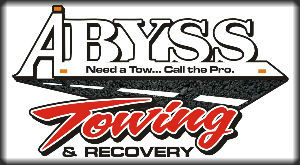



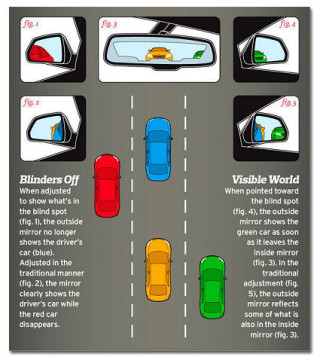


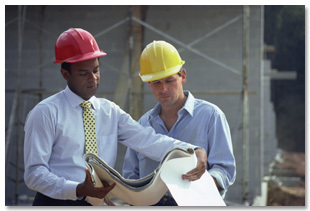



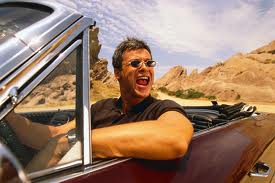



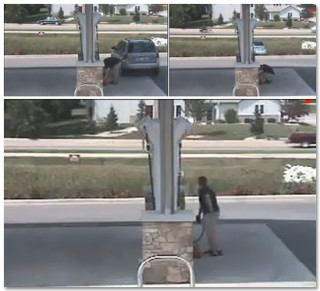


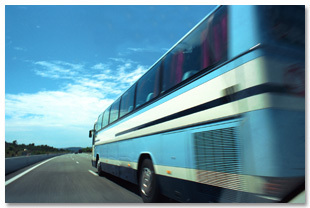

Comments are closed.